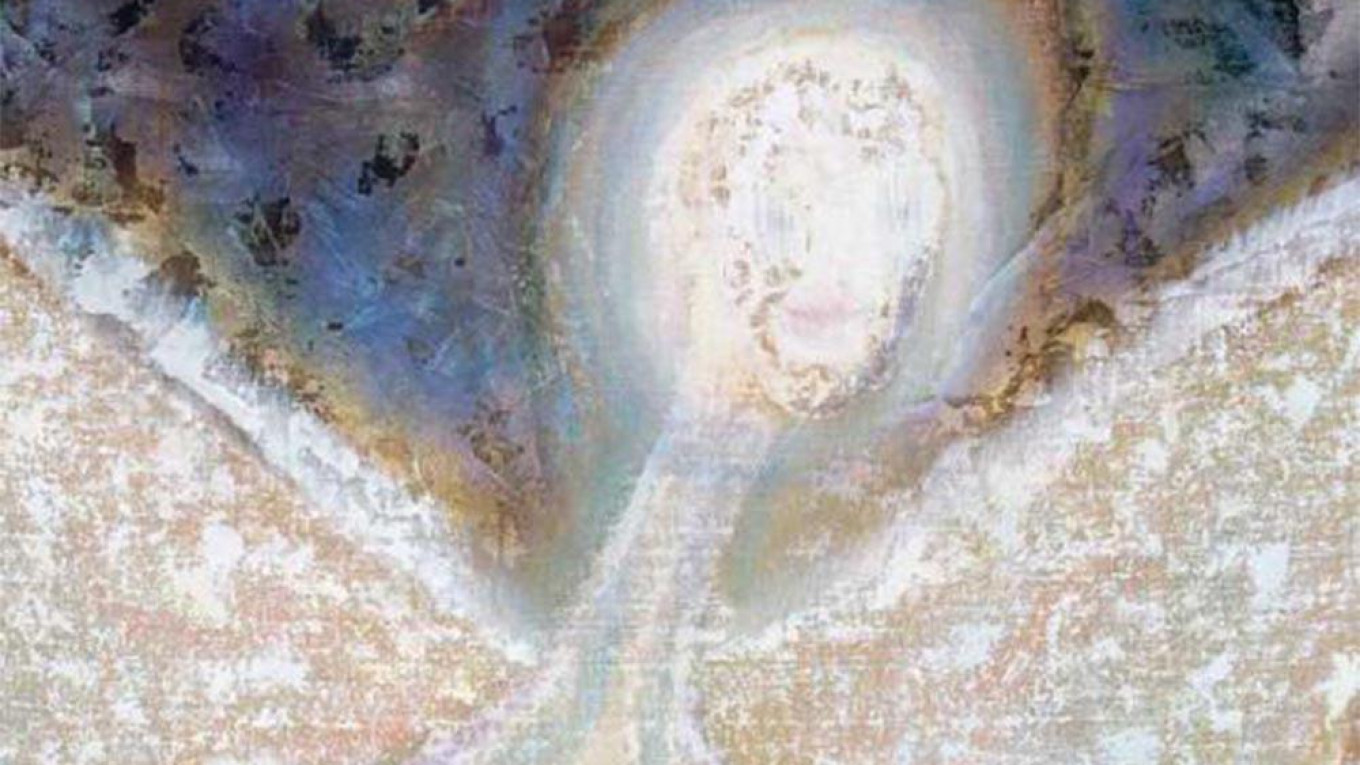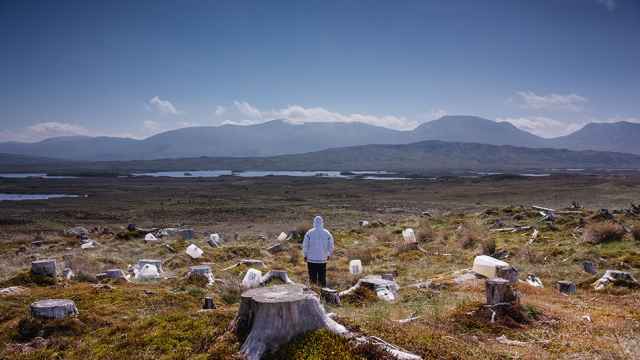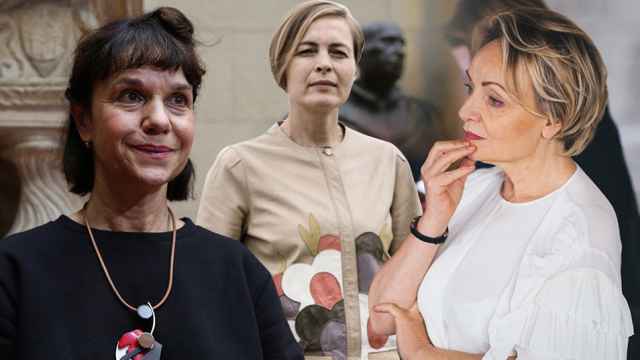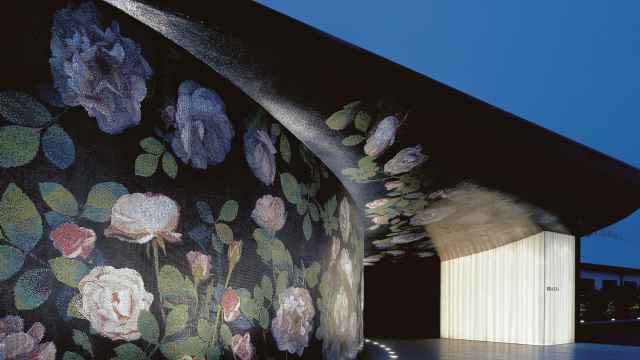Edward Bekkerman is a Russian-American artist, whose new exhibition, “Heaven,” just opened at the Russian Museum in St. Petersburg. He was born in Sochi, Russia, trained as a ballet dancer at the Bolshoi Theater school, but moved to the U.S. in the 1970s with his parents and became an artist, following in the footsteps of his father, a well-known sculptor.
Bekkerman's first show in Russia was in1994, and since then he had a major retrospective at the Moscow Museum of Modern Art in 2015. “Heaven,” a show of recent works, first ran at the Sochi Museum of Fine Art before coming to St. Petersburg. Although Bekkerman’s themes are otherworldly — angels, ethereal flowers, dreams — he uses earthy rather than bright tones in his paintings. The Moscow Times talked to him about his new exhibition, his American-European-Russian dance and art biography, and his future plans.
Q: You lived in Russia as a child, didn’t you?
A: Yes, I lived in Sochi till I was about 8 or 9. It was just the normal life of a kid who was happy with his childhood. My father was a sculptor. Then my whole family moved to Moscow. I’m not sure what was the exact reason for the move — maybe my parents wanted to give their kids a better education. Anyway, as a result I got enrolled in Bolshoi School of Ballet.
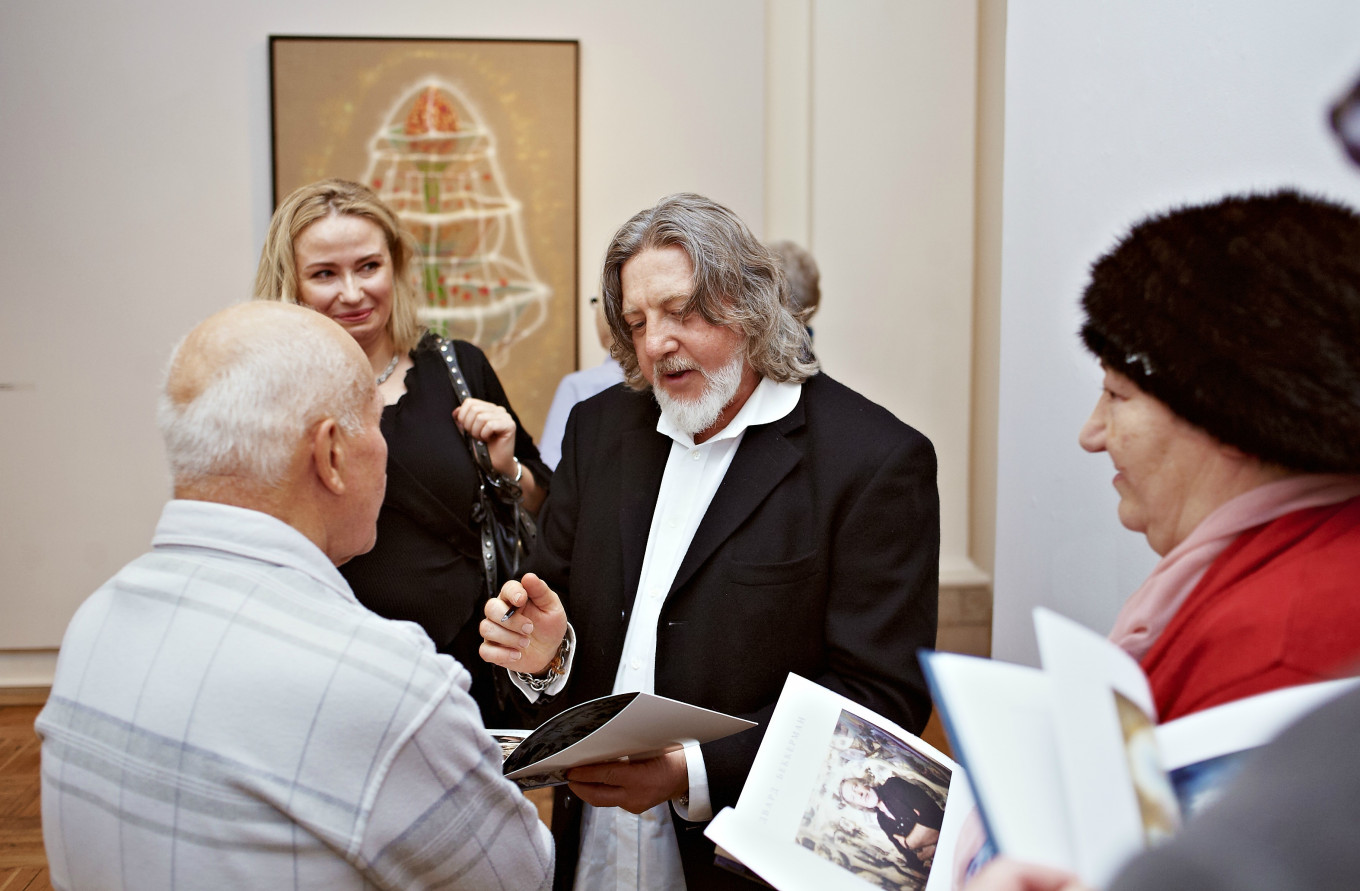
Q: What was it like to study at the Bolshoi School of Ballet?
A: It was fantastic! I studied there for four years as a dancer. I am still friends with a lot of people I studied with there. We were lucky to have a great teacher - Petr Pestov, well known in the ballet world.
Q: And after that you left Russia?
A: Yes, my parents decided to emigrate to America, and for about a year I didn’t dance. People immediately recommended the School of American Ballet, known also as Balanchine school. It’s considered one of the best schools in the U.S. I went to a special high school that allowed me to combine rehearsals and studies. After studying there I started performing, going on tours to Europe. That’s when I got an injury, which was quite substantial. I realized that I’d never be a principal dancer and the idea of being second-tier didn’t excite me. I decided to quit. And that’s when art called me.
Q: Where did you study art?
A: I went to the Art Students League of New York. All the great American artists came out of that school, including Jackson Pollock and Willem de Kooning. Mark Rothko used to teach there. It’s a school of freedom, and when you study there it becomes your whole life. I graduated with honors and became a life member of the school. It was absolutely beautiful, five years of education. I think every artist should have that, because I think you should know the rules before you break them.
Q: How did you develop your unique style?
A: After graduation I closed myself in a studio that I rented and just started to develop my own artistic language. I have several series, each with a corresponding style. I continue to come back to this or that series depending on the show we are preparing. Here, at the exhibition “Heaven,” we have "Angels," "Flowers" and some "Heads." Many of these paintings have been done recently. In Moscow two years ago it was "Angels," "Heads," "Prophets," "Spirits," "Dreams" and "Victories." "Victories" is something I’ve been working on more and more now, they actually require more time to paint. As well as Dreams. It’s all a part of a continuous process of development.
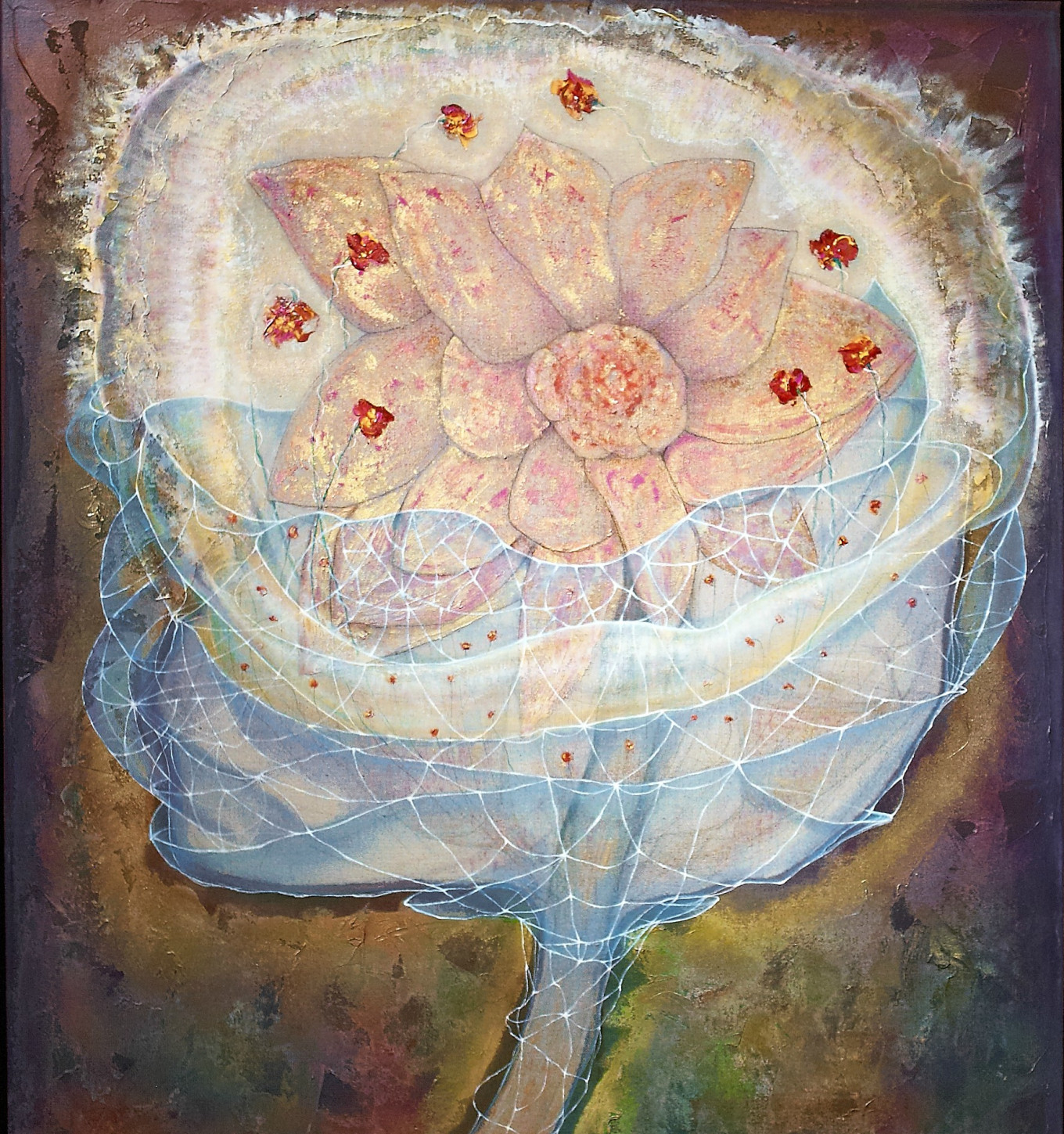
Q: What are your influences?
A: There are so many fantastic artists out there. Though I am a contemporary artist, with my own vision, I am pretty much into the old art - Michelangelo, Rembrandt, Vermeer, da Vinci, etc. Although I like Pablo Picasso, Lucian Freud and Francis Bacon, too. As a sculptor I’ve been influenced by Alberto Giacometti, Auguste Rodin and Henry Moore.
Q: Would you agree that your "Victories" series resemble Jasper Johns’ "Targets" a bit?
A: The funny thing is that I never even saw Johns’ "Targets" until recently. Mine are totally different, because I like to shoot and I shoot my own targets. I always thought how beautiful the targets are, especially the fluorescent ones that light up at night or when you hit the bull’s eye of an ordinary target. That’s why I decided to incorporate them in my paintings. And then all of a sudden I come to an auction and see one of Jasper Johns’ "Targets" and I think to myself: people are going get the wrong idea. I really like his earlier works — I love his "Flags."
Q: Where do you do most of your work?
A: In my New York studio. And I have a studio in Florida where I make sculptures. I am much more of a sculptor actually, I am just hiding that fact for now. I plan to install my sculptures and fountains all over the world. I also go to an artists’ residency in Colorado near a marble quarry on a regular basis — it’s run by a good friend of mine.
Q: Do you have mostly American or Russian buyers?
A: Collectors are from all over the world. I am represented by ABA Gallery in New York City. It’s a very serious gallery and I’m pleased with our cooperation. Next year I am doing a show with another prominent New York gallery, ACA, which represents many important American artists.
Q: Are you planning on more exhibitions in Russia?
A: I think I am at a good point now. I did my first exhibition in Russia back in 1994. If there will be some serious proposals, I will consider them, but I think it’s time to get back to work, to continue to create.
Q: Do you consider yourself an American or a Russian artist?
A: I developed as an artist in America, so I’m an American artist. But I have Russian roots. I am sure it comes through in my works, especially my fascination with fairytales. There’s quite a bit a touch of mystery or magic in my works, especially in my “Dreams” series.
The exhibition will run at the Stroganov Palace in St. Petersburg until Feb. 12.
Stroganov Palace. 17 Nevsky Prospekt. Metro: Nevsky Prospekt. rumuseum.ru/stroganov-palace.
A Message from The Moscow Times:
Dear readers,
We are facing unprecedented challenges. Russia's Prosecutor General's Office has designated The Moscow Times as an "undesirable" organization, criminalizing our work and putting our staff at risk of prosecution. This follows our earlier unjust labeling as a "foreign agent."
These actions are direct attempts to silence independent journalism in Russia. The authorities claim our work "discredits the decisions of the Russian leadership." We see things differently: we strive to provide accurate, unbiased reporting on Russia.
We, the journalists of The Moscow Times, refuse to be silenced. But to continue our work, we need your help.
Your support, no matter how small, makes a world of difference. If you can, please support us monthly starting from just $2. It's quick to set up, and every contribution makes a significant impact.
By supporting The Moscow Times, you're defending open, independent journalism in the face of repression. Thank you for standing with us.
Remind me later.


